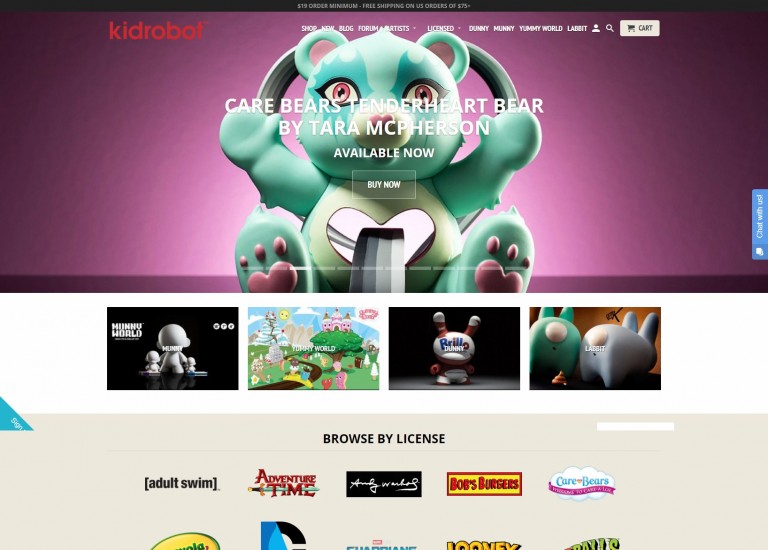By Bob Kruse on February 26, 2018 in eCommerce Design

We all love shopping online these days and it’s all because e-commerce is super-efficient. But if you are in the e-commerce business, then success is all about the number of conversions you can route into your revenue generation stream. Sometimes you might notice that you are getting a very good amount of traffic but you aren’t selling! Well, it could all be down to the fact that clients aren’t sure that you are the right person to do business with.
Let’s just say, maybe they don’t trust your e-commerce site. The question though is how do you build trust among people who know nothing about you? Well, one way to do so is to use what are known as trust signals. In fact, we will be telling you more about trust signals and some of the most important signals your business is craving for. So, let’s get started.
What are Trust Signals?
For starters, trust signals are simply indications on your e-commerce site, that are useful in encouraging users to transact with you. The idea here is to build trust among potential consumers thus these signals are quick wins that sell your brand-even to those who don’t know about you. Now, what are some of the most important trust signals that every e-commerce site should have?
1. Contact Information
One of the most important pieces of information that users look for in a website is the contact info. This includes your physical address (if any), your email, phone number and hours of operation. This information should thus be availed in a place where one can easily find them, perhaps through adding a contact link on your menu or footer. This will not only enhance user trust but it will also enhance search engine trust plus it can act as local signals for SEO purposes not to mention that users will find it very easy to get in touch for inquiry and support services.
2. Social Profiles
Social media is part of us these days and users tend to use their favorite social network channels not for social purposes only but for informational purposes as well. These days, a business that has a good amount of following on social media channels is taken to be trustworthy and this is why you need to build your social following and show it off on your e-commerce website as well. You can embed social icons and social activity with links to your social media platforms plus you can also display social share icons on your products and posts, a feat that is also good for digital public relations
3. Reviews
Many e-commerce businesses are scared of allowing user reviews fearing that the negative ones may upset the perception of your business. Now, this isn’t always the case given that reviews can help build a good reputation if done right. New customers take reviews as an indicator of legitimacy. Back in 2014, a survey by Bright Local established that about 90% of consumers value reviews in much the same way as personal recommendations.
So if you get lots of good reviews and a few that are negative, then they should serve to encourage them to transact with you provided the reviews are and look authentic. You don’t want to find yourself in a scenario where users discover that you are using synthetic reviews. That would be a PR disaster, right? Did we mention that you can also leverage the reviews to improve your products as you grow? Yes, you can and reviews will also help boost your domain’s authority.
4. Trust Seals
Trust seals are those images, icons or logos from brands and companies that users know and trust. In other words, the confidence that users have on the brands displayed will sort of trickle down to your own business. A good example of such trust seal would be an SSL vendor seal better known as SSL Secure Site Seal. E-commerce sites need a Domain Validation SSL or an Extended Validation SSL Certificate to protect data and communication between consumers and a site’s server. Yet again, it’s not just about installing this certificate on your server, you should show the seal to assure consumers that they can do any vital transactions securely on your site. You can see also HTTPS visual trust indicators in next to the site URL in browser address bar, which informs e-commerce site is secured with SSL certificate, as shown in the picture below:

In 2011, Actual Insights did a survey pertaining trust in online shopping and found that trust seals boosted trust in more than 75% of the respondents. Interestingly, 61% of the respondents confessed to having canceled an online transaction at least once just because they didn’t see any trust logos. This just shows you how important trust seals are in the world of e-commerce.
5. Partners
Credible Partners in your niche or outside are also quite good in improving your vote of confidence among user. This shows your customers that you have a good social and business connection around meaning that you can be trusted for business!
6. Site Navigation and Proper Content
Although a good design doesn’t directly indicate credibility, users usually tend to believe so. An e-commerce designed well coupled with proper content is a good indicator that the website is credible and trustworthy. We are talking about things like arranging your products well, providing adequate product information, creating easy to use menus, designing the checkout pages properly just to mention but a few. The bottom line is that your site should be super easy to use with lots of information as far as products are concerned.
7. Policies
You should also have policy information on your e-commerce to show the consumers that there is a clear structure in the way the business is run. The policies should capture things like business rules, standards, terms and conditions, legal information etc.
Wrapping Up
Again, e-commerce success is all about success in conversions and trust plays a huge hand in this. This means that you can’t underestimate the power of trust signals on your e-commerce website. Just remember that trust signals tend to differ depending on the audience and where your business operates. What’s remains constant though, is that you need those trust signals on your e-commerce website!
Sources:












